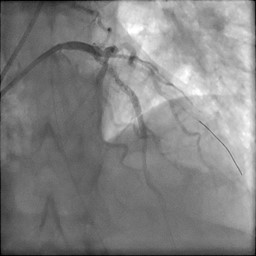Lots of interesting abstracts and cases were submitted for TCTAP & AP VALVES 2020 Virtual. Below are accepted ones after thoroughly reviewed by our official reviewers. Don¡¯t miss the opportunity to explore your knowledge and interact with authors as well as virtual participants by sharing your opinion!
* The E-Science Station is well-optimized for PC.
We highly recommend you use a desktop computer or laptop to browse E-posters.
CASE20200921_002
| High-Risk Intervention (diabetes, heart failure, renal failure, shock, etc) - High-Risk Intervention | |
| Usefulness of a Perfusion Balloon, Ryusei, for Intra-procedural Stent Thrombosis in Patients with Anterior ST-elevated Myocardial Infarction Complicated with Cardiogenic Shock | |
| Taro Takeyama1, Yukiko Mizutani2, Tetsuya Ishikawa1, Kahoko Mori2, Hideyuki Aoki2, Yuki Kondo1, Masatoshi Shimura1, Kota Yamada2, Hidehiko Nakamura2, Itaru Hisauchi2, Shiro Nakahara2, Sayuki Kobayashi2, Isao Taguchi2 | |
| Dokkyo Medical University Saitama Medical Center, Japan1, Dokkyo Medical University, Japan2, | |
|
[Clinical Information]
- Patient initials or identifier number:
H. T.
-Relevant clinical history and physical exam:
Intra-procedural stentthrombosis (IPST) is a rare but seriouscomplication of thereperfusion therapy of acute myocardial infarction (AMI). However, detailpathophysiology and predictors of IPST, and the optimal method to treat IPSTwere not fully understood.
-Relevant test results prior to catheterization:
A 49-year-old male who presented withventricular fibrillation (VF) dueto anterior ST-segment elevatedacute myocardial infraction (STEMI) underwentemergency percutaneous coronary intervention (PCI) after return of spontaneouscirculation with intra-tracheal intubationand insertion of intra-balloon aortic pumping (IABP).
- Relevant catheterization findings:
The first angiogram revealedTIMI-0 grade flow at the proximal anterior descending artery (LAD) (Figure A). Following pre-dilations with 2 and 3 mm-sized semi-compliant balloons, an everolimus-elutingstent (Synergy 3.5 x 38 mm)was placed at the diffuse sclerotic culprit lesion from the mid to proximal LAD (Figure B). A few seconds after the stent implantation, diagonalbranch was occluded with thrombotic filling defect and thrombotic fillingdefect rapidly progressed to entire stent, i.e. IPST (Figure C).
   |
|
|
[Interventional Management]
- Procedural step:
The activatedclotting time was over 200 s, and argatroban (10mg) was intra-coronaryadministered for a few times. With frequent aspirations for developed in-stentthrombus, a 3.5 mm-sized non-compliant balloon was inflated several times.However, it failed to manage thrombus, representing as a plenty of protrudedthrombus image by IVUS (Figure D), implicated in repetitive no-reflowphenomenon (Figure E). In addition, it was difficult to inflate long-timebecause of occurrence of VF. Then, weused a perfusion balloon (Ryusei 3.5 x 20 mm), enabled to inflate long-timewith maintaining coronary perfusion (Figure F). By repeated long-time andhigh-pressure perfusion balloon inflations, the final IVUS image showed thewell suppressed in-stent thrombus inside Synergy (Figure G). Then, PCI wasceased by obtaining TIMI-3 grade flow (Figure H).
  - Case Summary:
A perfusion balloon, Ryusei, enabled long-timeinflation without hemodynamic deterioration in the reperfusion of STEMI complicated withcardiogenic shock. Thus, long-time balloon inflationwith a perfusion balloon, Ryusei,deemed to be a valid option for intra-procedural stent thrombosis (IPST).
|
|